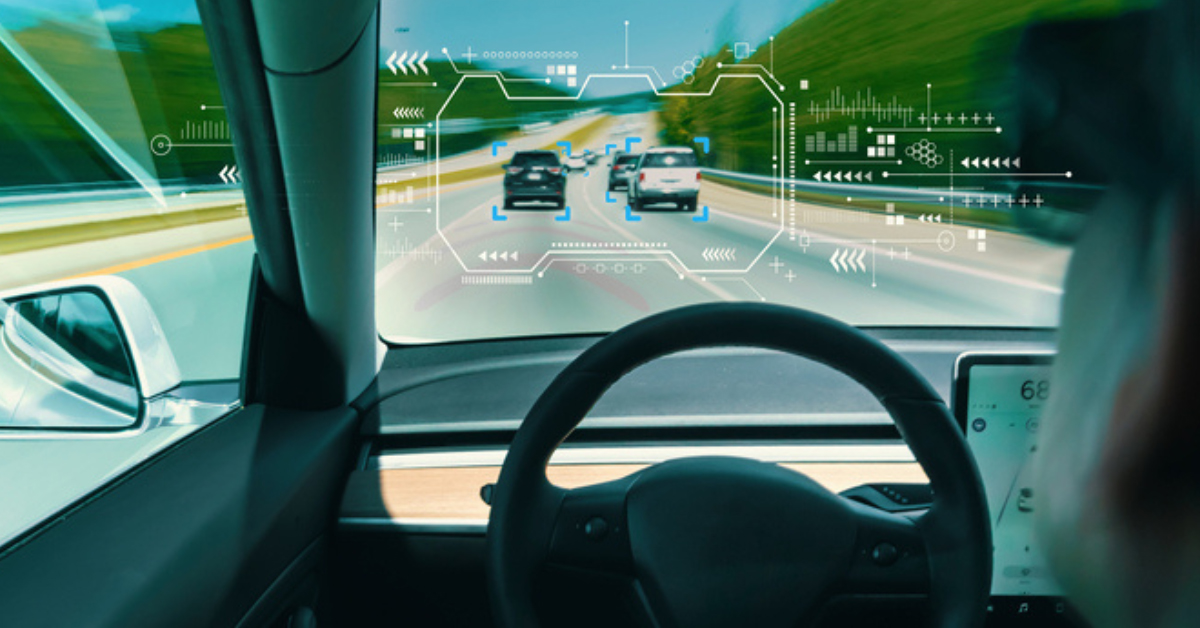Information highways
Managing infrastructure assets used to be all down to planned maintenance schedules. Now, as we enter the age of the Internet of Things, road managers have a growing array of smarter solutions at their disposal, as Paul Willis discovers
The Internet of Things (IoT) – meaning objects and devices fitted with some manner of smart technology and internet-enabled – is proliferating at an astonishing rate. According to some estimates it will consist of 30 billion objects by 2020. Among these are more and more devices devoted to road maintenance.
In the UK, for example, a number of local authorities and Highways England, the body that oversees England’s Strategic Road Network (motorways and A-roads), has begun installing wireless road sensors to aid gritting operations in winter. Similar sensors are being used to control traffic flow in French cities and measure deterioration on bridges. A separate project by US technology giant Harris Corporation is leveraging data from traffic cameras to predict adverse road conditions in North America and Europe.
These technological advances are in large part due to the plunging cost of IoT hardware, says Lee Chapman, professor of climate resilience at Birmingham University in the UK. “The big problem in the area of highway maintenance is that we’ve never had enough data on weather and road use,” he says. “But we only ever put out a limited number of weather stations and traffic counting devices, simply because the cost, until recently, has been deeply prohibitive.
“If you want to install traffic-counting data, for example, you have to power it, which probably means digging up the road to install power lines. You also need some way of back-hauling the data, which might be a modem or a satellite phone, which have a monthly cost associated with them.
“IoT does away with these types of cost. With IoT we tend to use low-powered sensors that can run on lithium batteries. We can put a sensor in a city and back-haul data using citywide area networks, so you don’t need a modem or satellite phone.”
These cost reductions, brought about by the miniaturization of electronics, also lead to greater scalability. “Now you can put 10 if not 100 sensors where you put one sensor in the past,” says Chapman. “So the granularity of what you can understand about what’s going on in the road network is available now at an unprecedented scale. That has exciting consequences for how these maintenance regimes are dealt with.”
Chapman has spun his own research in this area into Wintersense, a road temperature sensor now used by transport authorities in the UK to help them plan their winter de-icing strategy.
“The sensor quantifies temperature differences on a nightly basis,” he says. “That sounds pretty straightforward. But on a typical winter’s night in a city like Birmingham you would have a 10°C [50°F] temperature difference between the outskirts and the city center. These sensors allow you to target that treatment so that you can save money by not putting it down where it’s not needed.” The extra layer of data also provides a cushion against potential litigation. “You’ve got an audit trail to show that you took all necessary steps to make the roads as safe as possible,” he says.
Similar road sensors have also been installed in the French city of Troyes by IoT startup Hikob. The sensors monitor road surfaces and identify road hazards by measuring changes in temperature, traffic volume and humidity.
A long road ahead
The examples quoted above might give the impression that IoT is taking over road maintenance. But in reality they are the exception, a few small-scale projects run by startups, and for the most part road maintenance regimes remain trapped in the old model of doing things.
“It’s quite a conservative industry,” says Chapman. “There are innovators in the sector but since the credit crunch, budgets have tightened up. It means it’s a challenging time to push all this through but it also underlines that we need an intelligent approach to tackling it.”
Chapman’s thoughts are echoed by Richard Hayes, chief executive of the UK’s Institute of Highway Engineers, who believes that part of what is feeding this conservatism is a fear that “if you start looking into these things you will get too much information”.
“The attitude is: It’s best not to know how much of a bad state things are in because then you have to do something about it,” he says. “So at the moment we’re tending to just paper over the cracks.”
But this attitude is unsustainable in the long run, according to Chapman. “If you don’t know about a problem, is it still a problem? Well, of course it is. If you can make the business case that fixing a problem before it becomes critical is going to cost you less in the long run, then hopefully that attitude changes,”he says.
In the USA, the failure to address the problem of crumbling road infrastructure has caused a crisis on the country’s roads. The starkest example of this was the 2007 collapse of the I-35W Mississippi Bridge in Minneapolis, which cost the state millions of dollars in repairs and resulted in 13 fatalities.
A 2014 study by the Federal National Bridge Inventory showed that over 65,000 of roughly 600,000 US bridges were classified as “structurally deficient”, and of these nearly 21,000 were classified as “fracture critical”, meaning the failure of a single, major component could lead to their collapse.
In response to this crisis, various small-scale efforts have been launched using IoT technology. For example, Michigan University’s Center for Wireless Integrated MicroSensing and Systems has fitted the new Carquinez Bridge in San Francisco with a range of IoT sensors including tri-axis accelerometers, strain gauges, and wind velocity, temperature and displacement sensors. The data collected is used to build a picture of the bridge’s response under high-stress conditions such as high winds and earthquakes, and to determine in real time when the structure needs repairing.
These early intervention strategies challenge the existing approach, which is characterized by Hayes as “a worst-first strategy”.
“The standard inspection of a bridge might be to look at it and say, ‘It looks okay. There’s a bit of paint coming off’. But the person doing the inspection doesn’t realize that the paint is the bridge’s first line of defence,” he says. “We’re stuck in a funding cycle that says it’s better for a thing to fall apart before we do anything about it.”
Opportunistic sensing
One potential way around this funding gap is to leverage IoT technology that is already out there – so-called opportunistic sensing. An example of this is the Harris Corporation’s Helios project, which automatically classifies images from tens of thousands of traffic cameras on roads all over the world to determine the presence of weather conditions such as fog, snow and rain as well as measuring traffic density. The information is fed back to road authorities to tell them when conditions are changing. An alert can be sent out in the case of extreme weather.
“In this case we don’t own any assets,” says Sheldon Drobot, principal of noble causes for Harris Space & Intelligence. “We’re simply getting the camera image from the departments of transportation and running big data analytics on it. So there’s no added cost.”
This last factor is surely a major determinant in the technology’s big rollout – it’s operational on 45,000 cameras in the USA and about 10,000 in the UK. An even richer potential harvest of opportunistic sensing data is from road vehicles, according to Drobot, who has authored a Ted Talk on the subject.
“By sourcing the data from cars you can build up a more detailed picture of the roads,” Drobot says. He gives the example of 3D accelerometer data available on many modern cars. “You could use this data to detect potholes. If there’s a sudden dip in one of the axes, for example, it could indicate a pothole.”
The technology already exists to do this. The main obstacle Drobot sees to its rollout is a lack of standardization. “The worst thing in the world would be each car manufacturer having its own standard for data collection and transmission and none of them working together,” he says. “We need a common language so that road managers don’t need 50 different translators to bring everything together.
“The other area of concern is data privacy. We need to make sure we don’t give away personal information about drivers.”
Management of things
Bridges
As Birmingham University’s Prof. Lee Chapman explains, monitoring a bridge’s condition involves putting “multiple sensors on it to measure the various strains on the structure”. The sensors available to monitor bridges include accelerometers, strain gauges, and wind velocity, temperature and potentiometer displacement sensors. These IoT systems have already been deployed on some bridges in the USA.
Traffic volumes
At present, traffic volume is most commonly measured by pressure points embedded in the road, but there’s no reason you can’t do it using an IoT lamppost monitor, according to Prof. Chapman. The monitor has a simple motion sensor like the one used in domestic burglar alarms.,.Chapman says, “The usefulness of this data to road maintenance is that you can use it to work back to find out the likely impact of traffic volumes on wear and tear.”
Snowplows
GPS has existed on snowplow fleets for some years. Originally it was fitted to plot vehicle location but over time it has developed into much more sophisticated systems that can collect information on road conditions, how much salt has been put down and even the position of the plow’s blade. According to Harris Space & Intelligence’s Sheldon Drobot, IoT technology can be leveraged to “feed this data in real-time back to the maintenance shed, so that they can better manage their assets out on the road”.
Gullies
UK-based startup InTouch has developed IoT sensors to work out when gullies are blocked, to prevent localized flooding on roads. The system uses on-the-ground sensors in conjunction with real-time weather data to help predict floods and send out automated alerts when necessary.
Embankments
IoT devices are being used to track embankment stability. “There are lots of sensors in there to monitor things like soil moisture to work as a warning system for landslide risk by the side of the road,” says Prof. Chapman.
Big data challenges
Increasing amounts of data from multiple sources mean we must develop smarter ways to analyze it and turn it into usable information
The hope is that by deploying IoT technology across the road network a wealth of much-needed data will become available to help better inform decisions about road maintenance. But as Birmingham University’s Prof. Lee Chapman puts it: “It’s not data that you need, but information.”
In other words, data on its own is useless unless you can understand from it what action is required. Given the vast troves of potential data sources that IoT technology offers the sector, there’s a risk of drowning in data. To avoid this problem, Sheldon Drobot of Harris Corporation believes, the industry can draw inspiration from the development of satellites.
He says, “About 50 years ago we had just a couple of satellites sending down a small amount of data. Fast-forward to today and we have vast amounts of data every minute. There’s so much that no human can make sense of it in real time. Instead we rely on the research community to produce sophisticated algorithms to trawl that data for usable information.”
But no matter how sophisticated the filtering software, Drobot says that for critical things “you’ll always need a human in the loop”.
But these concerns about big data are not a reason to reject it, especially given the alternative, which means staying with a current model that relies for a large part on localized knowledge, which is necessarily circumstantial and easily lost.
Chapman says, “It’s fascinating if you chat to the people on the ground who do the maintenance. What they have in their head is an encyclopedic knowledge of the road network they are dealing with – they know the network; they know where the problems are likely to be. But if they move on, that information is not necessarily retained. So you can think of the IoT as replacing or providing that knowledge.”
Share your story
Do you have an innovation, research results or an other interesting topic you would like to share with the professionals in the infrastructure, traffic management, safety, smart mobility and parking industry? The Intertraffic website and social media channels are a great platform to showcase your stories!
Please contact our Sr Brand Marketing Manager Carola Jansen-Young.
Are you an Intertraffic exhibitor?
Make sure you add your latest press releases to your Company Profile in the Exhibitor Portal for free exposure.








